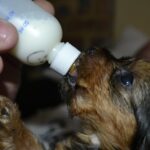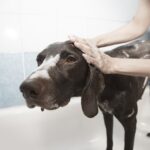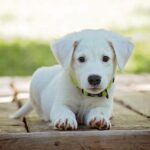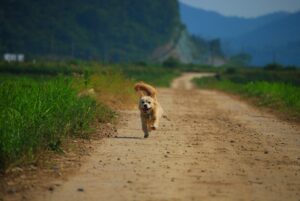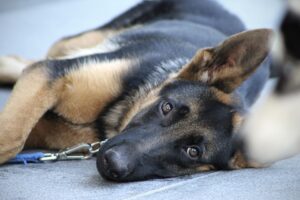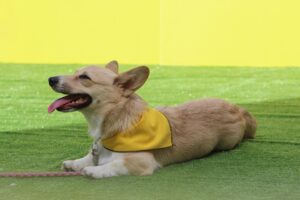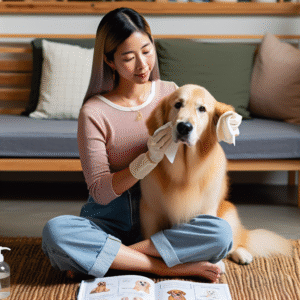
Bringing home a new puppy is a joyous occasion, but it also comes with a set of responsibilities. One of the most crucial tasks for new pet owners is house training, which sets the foundation for well-mannered behavior in the future. While it can be challenging, with the right approach and patience, you can achieve quick success. This article will provide essential tips for effective puppy house training.
Understanding Puppy Behavior
Before diving into house training, it is essential to understand your puppy’s behavior. Puppies are naturally curious and eager to learn, but they also have short attention spans. Understanding their biological needs and behavior will help you create a suitable training plan.
Natural Elimination Schedule
Puppies have small bladders and need to eliminate frequently. Generally, they need to go out:
- First thing in the morning
- After meals
- After naps
- Before bedtime
- Every 1-2 hours during the day
Recognizing this schedule can help you anticipate when your puppy needs to go.
Signs Your Puppy Needs to Go
Watch for signs that your puppy needs to eliminate, such as sniffing the ground, circling, whining, or heading towards the door. Promptly responding to these signals can prevent accidents inside the house.
Establishing a Routine
Consistency is key to successful house training. Establishing a routine helps your puppy understand what is expected of them and reduces anxiety.
Feeding Schedule
Creating a regular feeding schedule is vital. Feed your puppy at the same times every day, which will help regulate their elimination schedule. Avoid free-feeding as it can lead to unpredictable potty times.
Designated Potty Area
Choose a specific area outside where you want your puppy to eliminate and take them there each time. The consistent location will help them associate the spot with potty time.
Positive Reinforcement
Positive reinforcement is one of the most effective training techniques. Rewarding your puppy for good behavior encourages them to repeat it.
Praise and Treats
When your puppy eliminates in the designated area, immediately reward them with praise and a small treat. This immediate positive reinforcement helps solidify the behavior.
Avoid Punishment
Never punish your puppy for accidents. Negative reinforcement can create fear and anxiety, which may lead to more frequent accidents. Instead, focus on rewarding the behaviors you want to encourage.
Crate Training
Crate training can be a useful tool in house training. When used correctly, a crate provides a safe and comfortable space for your puppy and can help prevent accidents inside the house.
Choosing the Right Crate
Select a crate that is appropriately sized for your puppy. It should be large enough for them to stand, turn around, and lie down comfortably, but not so large that they can eliminate in one corner and sleep in another.
Introducing the Crate
Make the crate a positive place. Use treats and toys to encourage your puppy to enter voluntarily. Start with short periods inside the crate and gradually increase the time as your puppy becomes comfortable.
Using the Crate for House Training
Puppies naturally avoid soiling their sleeping area, so the crate can help prevent accidents. However, never leave your puppy in the crate for too long. Ensure they have frequent potty breaks, especially after eating, drinking, and playing.
Dealing with Accidents
Accidents are a normal part of house training. How you handle them can impact your puppy’s learning process.
Stay Calm and Clean Up
If you catch your puppy in the act, calmly interrupt them and take them to the designated potty area. Clean up accidents with an enzymatic cleaner to remove odors and prevent repeat offenses in the same spot.
Reflect and Adjust
If accidents are frequent, review your training routine. Are you taking your puppy out often enough? Are you recognizing the signs that they need to go? Adjust your schedule and strategies as needed.
Patience and Consistency
House training a puppy requires patience and consistency. Every puppy is different, and some may take longer to train than others. Celebrate small successes and remain patient through setbacks.
Consistency is Key
Stick to your routine and training methods. Inconsistencies can confuse your puppy and prolong the training process. Ensure all family members are on the same page regarding the training plan.
Be Patient
Remember that house training is a learning process for both you and your puppy. Mistakes will happen, but with persistence and a positive attitude, success is achievable.
Conclusion
House training a puppy is a vital step in ensuring a harmonious relationship between you and your pet. By understanding your puppy’s behavior, establishing a routine, using positive reinforcement, and being patient, you can achieve quick success. Remember that every puppy learns at their own pace, and with love and consistency, your puppy will become well-trained and a cherished member of your family.
#ChatGPT assisted in the creation of this article.

